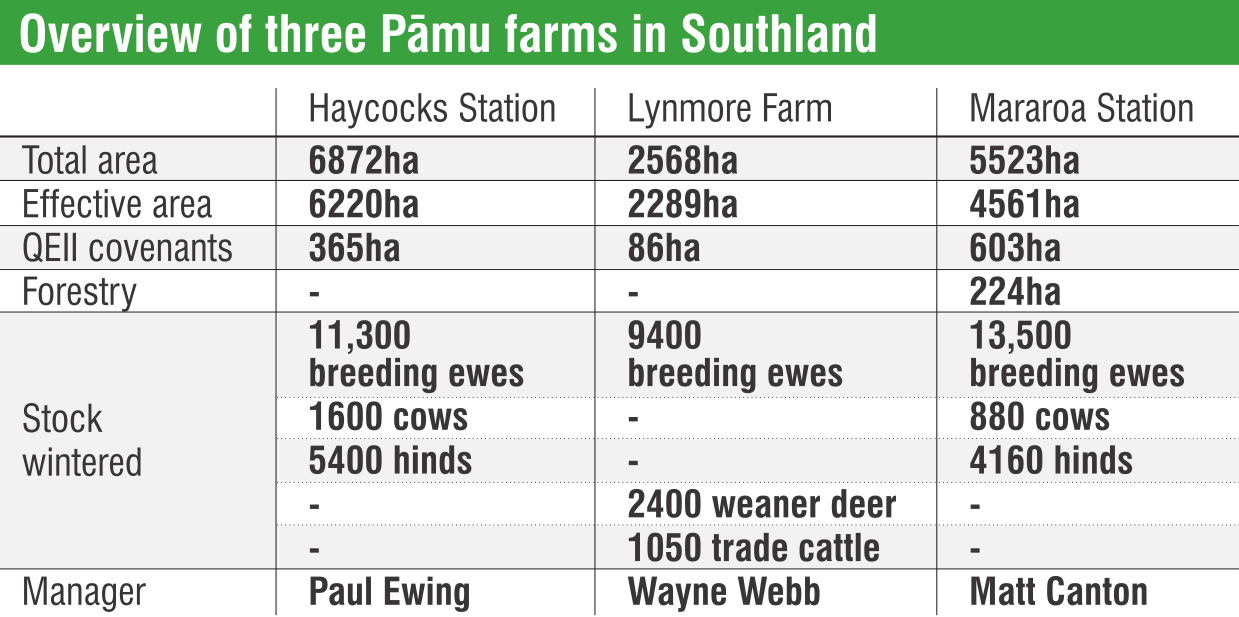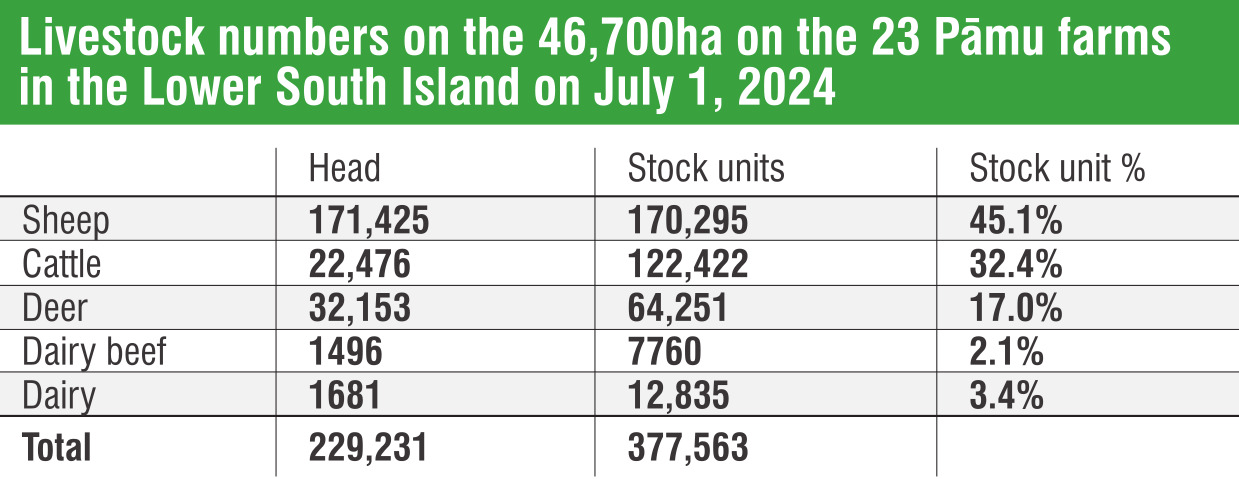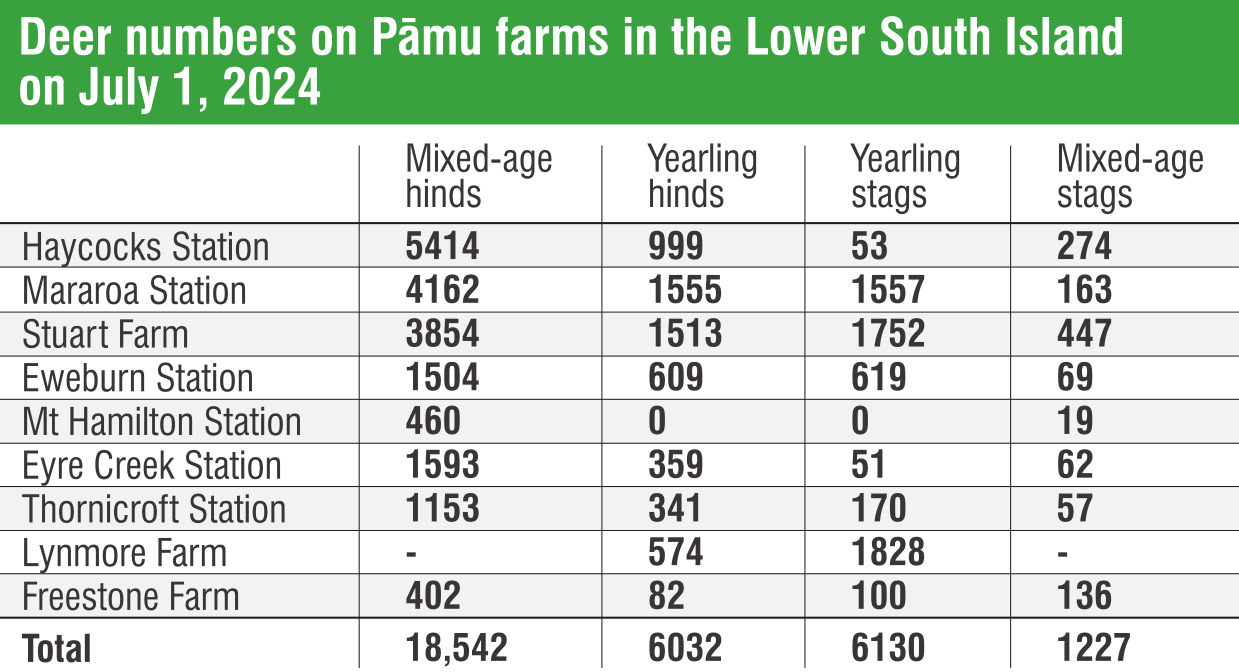
Confidence in the deer industry is set to bolster herd sizes on state-owned farms in the South.
Pāmu gave more than 100 people a tour of three of its Southland deer farms — Haycocks Station, Lynmore Farm and Mararoa Station.
Pāmu Lower South Island general manager Grant McNaughton, of North Otago, said the aim of the open day was to show Pāmu’s belief in the deer sector and its own farm systems.
"We are confident in the deer industry and we want to show that confidence," he said.
Of the 23 Pāmu farms in the lower South Island, nine run deer.

Pāmu would continue to invest in its deer systems to optimise stocking rates, increase productivity and maximise returns for the government, he said.
"We are fine-tuning our grass supply curve to meet our demand, which will lead to an increased stocking rate over the next three to five years," he said.
Pāmu supplies venison to Alliance Group, Duncan Venison, Firstlight Venison and Silver Fern Farms.
Silver Fern Farms was supplied most of the venison, he said.
Pāmu was a shareholder of the Firstlight Venison programme, which markets wapiti and red deer cross venison.

Wapiti bulls were being put over red deer hinds on Southern Pāmu farms Hindon Farm, Mararoa Station and Thornicroft Station.
"Mararoa was the first cab off the rank and have done a superb job," Mr McNaughton said.
All of the hinds on Pāmu farms in the South were red deer.
Pāmu had its own red deer and Wapiti stud herd in the South.
A plan was to put Wapiti stags over about 30% of the red deer hinds on Pāmu farms in the South.

Pāmu’s strategy includes increasing the mixed-age hind herd by up to 2000 animals on Pāmu farms in the South.
More than 18,500 mixed-age hinds were run across eight farms in the South in winter last year.
The open day tour started on Haycocks Station, about 40km east of Te Anau.
Manager Paul Ewing said Haycocks Station was long and narrow, and a 37km road ran the length of the station.
"You have to have your thinking cap on all the time so you’re not running stock from one end to the other," he said.

Mr Ewing had worked on the property since 1992. Deer were introduced as part of a national diversification strategy in 2000.
"Haycocks was picked as one of the deer places and it has been a good move, because it is beautiful hind country," he said.
About 180km of fencing was done in three years, and deer fencing now surrounded 4000ha of Haycocks Station.
Being part of the continual development was satisfying, he said.
"We aren’t finished. There is still country that hasn’t been touched."

"I just did it and it is one of the best decisions I’ve made — lime has made this place."
The introduction of deer to Haycocks included buying 400 "beautiful and quiet" in-calf hinds.
"They taught me how nice hinds can be. I was sad to see them go as they started us off very well," Mr Ewing said.
Now about 5000 hinds were mated on the hill.
Helicopters would be used to move deer from the hill to the yards to wean fawns next month.

"They are fairly full-on days."
All stag fawns weighing more than 50kg were trucked to nearby Pāmu property Lynmore Farm for finishing.
Replacement hinds were moved to the dry and warm flats for wintering on swedes and turnips on Haycocks Station.
The mixed-age hinds were returned to the blocks they had been mustered from.
Spring last year was the wettest he had experienced on Haycocks.

Pests on Haycocks Station includes broom, gorse, matagouri and pigs.
"I hadn’t seen a pig on Haycocks in 30 years, but in the last two years there has been quite a few."
Mararoa Station manager Matt Canton said Pāmu had owned Mararoa since the early 2000s and he had managed it for the past 11 years.
About 2000ha of the station was deer fenced.
Deer accounted for 32% of the livestock on the farm and the rest was sheep and cattle.

All of the progeny remained on the station and everything was finished there.
Most were finished to meet the chilled venison market.
Some deer supplied the First Light Venison programme.
To be eligible for the programme, a wapiti cross deer must have a minimum carcass weight of 65kg.
The wapiti cross deer were killed from December.

The aim was to supply up to 450 deer to the Firstlight programme next year.
Nearly 1800 deer, a mix of red deer and wapiti cross deer, were processed at 56.8kg carcass weight for Alliance, Silver Fern Farms and Duncan Venison around October last year.
Lynmore Farm manager Wayne Webb said the Telstar block on Lynmore had traditionally been the finishing grounds for Haycocks’ weaner deer.
As production and efficiency of the unit had increased, more weaners had been sent from other Pāmu farms, such as Eyre Creek Station and Mount Hamilton.
Weaners arrive on Telstar from late March.

Deer were wintered on kale, baleage and hay and gained between 150g and 300g liveweight per day.
Mob sizes could range up to 500 weaners to utilise crop and minimise competition.
Weaners came off crop from late August on to ryegrass and clover forages and then rotated in up to three-day shifts to achieve maximum liveweight gains going into the peak killing period from October.
An integrated deer system between the Pāmu properties required constant communication between the managers, Mr Webb said.
"It is about having those conversations that work for all of us."
Southern Rural Life asked Mr McNaughton if the government was considering to sell Pāmu to pay some of its debt.

About half of the hectares Pāmu manages are leased so cannot be sold, he said.
Many of the farms were large and the sale price might be more than any New Zealander would be willing to spend.
"Do we want to sell and have overseas investment?"
The focus on Pāmu deer farms in the South was simple, Mr NcNaughton said.
"The team is dialled in on executing growing young stock and converting grass to animal, which is exciting because it is a really cool phase to be in."














